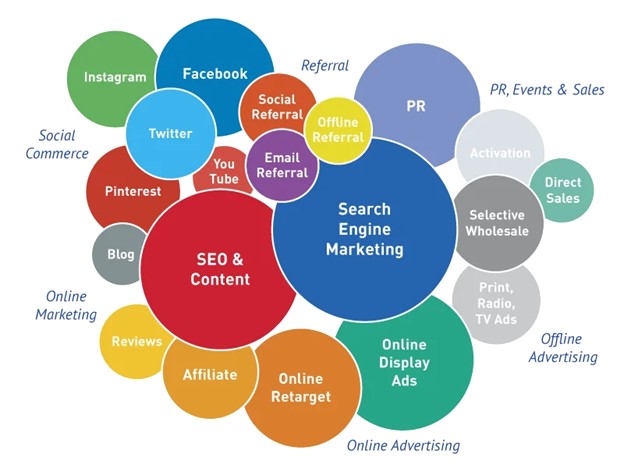Do you have a social media strategy? If not, it’s time to put one together. It may seem like a daunting task, but with the right messaging strategy in place, your company will start to see better engagement and more customers. But the most important element is integrating messaging into your social plan. First, let’s talk about what “messaging” means.
What is a Messaging Strategy?
Messaging strategy is a component of a company’s overall branding strategy. It hones in on what messages the company broadcasts to its audience and how those messages are delivered. Essentially, you can summarize it as what your brand says as well as how you say it.
Marketing messages are designed for target customers to receive the just-right information at the just-right time in order to transition them through from lead to point of purchase. While this should be integrated into every aspect of your marketing plan, social media is a highly effective medium for executing a messaging strategy. Since social media platforms provide the opportunity to interact with your customers on a regular basis, social media can be an especially useful tool in your digital marketing toolbox when it comes to creating a beneficial messaging strategy.
Key Elements of Brand Messaging
There are several important elements that should define your brand’s messaging strategy. These elements include:
Distinction From Competition
Unless you are selling a truly unique product or service, chances are you are going to have competitors in your space. In order to convince potential customers that your brand is the optimum choice, it is vital to separate your brand from its competition – and brand messaging can go a long way toward helping achieve this goal. It isn’t always possible to create a completely unique product or service. Creating a completely unique messaging strategy that will distinguish your brand from its competitors, however, is much more achievable.
Clear and Understandable Goals For Your Brand
Always develop your messaging strategy with your brand’s goals in mind. This starts with determining the most important messages/information you want your audience to know. It also entails figuring out the most impactful way to broadcast those messages in terms of tone and language used.
Understanding of Target Audience
Developing your brand messaging requires you to take your target audience into account at every step. The language and brand tone that will be most compelling to a target audience of business professionals, for example, isn’t likely to be the same language and brand tone that will be most impactful for a target audience of young retail shoppers. It’s important to carefully consider your audience when choosing the messages your messaging strategy will include (and, most importantly, the manner in which those messages will be delivered).
Storytelling
There’s a reason why storytelling has persisted across every culture since the dawn of time. If you want to engage your audience, nothing is more powerful than telling them a story. When developing your messaging strategy, make sure that you are also weaving a story about your brand and including elements of storytelling in the messages you broadcast.
Social Media as a Tool for Brand Messaging
Social media platforms provide you with the ability to communicate directly with your audience in a way few other digital marketing tools allow. While you can’t guarantee every member of your audience will see the content you post on your brand’s social media accounts, it will be seen by a large percentage so long as you employ the right social media practices. This means the content your brand publishes on social media is the most impactful medium for executing a messaging strategy.
Publishing posts to your social media followers isn’t the only way to leverage social media as a tool for brand messaging, however. In addition to creating posts, social media also enables you to communicate directly with your followers via social messaging applications. Direct messaging on social media is something that not many brands fully capitalize on. When used correctly and consistently monitored, direct messaging applications can be a powerful part of your overall messaging strategy.

Why Direct Messaging Needs to be A Part of Your Messaging Strategy
In addition to publishing content on your social media channels, there’re plenty of reasons why you should consider taking advantage of direct messaging as part of your overall messaging strategy.
First and foremost, using direct messaging is a clear demonstration of understanding your target audience. At this point in time, almost 60% of the world’s population engages online. And they’re spending an average of 7 hours a day connected. Almost since the entry of social media direct messaging applications, their use has surpassed that of major social media platforms.
Most large B2Bs don’t consider DM as part of their messaging strategy. However, it may surprise you to find you’re already using it. It might be in the form of a chatbot connecting to your sales team or a LinkedIn InMail campaign. Recognizing this, it may be time to get purposeful in how these uses connect to your overall messaging strategy. Plus, while DM isn’t only for Facebook, Instagram, and Twitter, they could very well be effective tools to use. Meeting your customers where they are and when they’re there is the epitome of a good messaging strategy coming together. So, if your target audience uses those platforms a DM campaign needs to enter your messaging strategy on social media.
With so many different elements of successful branding, it’s easy to get overwhelmed by what should be done first or how long something might take. Let us simplify this process for you. We can help you develop an effective messaging strategy for your brand. Schedule a consultation with our team and we will work together to create the perfect plan that fits your needs and goals.









